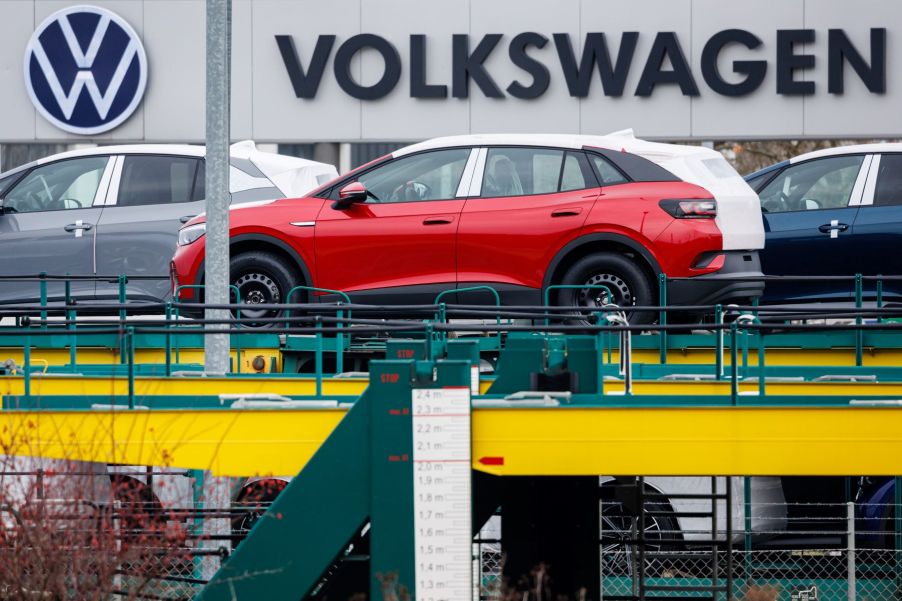
How Long Can an Electric Vehicle Sit Without Being Charged or Driven?
The viability and popularity of electric vehicles (EVs) as an alternative to ICE (internal combustion engine) vehicles is a conundrum. With developments in this industry happening virtually by the day, battery ranges have gone up, and prices have come down, but what has remained constant is people’s uncertainty when it comes to owning an EV themselves.
It’s a new frontier, so this sense of mistrust is understandable. One of the biggest questions being asked is how the battery behaves when the car’s parked for an extended period of time. No one wants to call a tow truck to their house because the car’s battery is dead. Thankfully, most of the time, this won’t and shouldn’t be the case, and we’ll tell you why.
Do electric vehicles lose charge when parked?

EVs lose charge when parked. However, the power loss is relatively minimal. If the electric vehicle hasn’t been parked for too long a period, the amount of charge lost shouldn’t affect the driver’s ability to, later on, get to their destination. Despite low leakage levels, many EV owners wonder why this has to happen at all.
Electric cars use Lithium-ion (Li-ion) batteries to control and run the vehicle’s motors. The efficiency of these battery packs and the associated monitoring system is what makes battery drainage so reduced. A Li-ion battery at 80% will discharge relatively little. Ironically enough, the battery monitoring system that prevents over-charging and over-discharging, as well as maximizing the battery’s longevity, drains some portion of the charge. Other background systems do this as well.
Battery depletion is a function of time; you’ll lose a little if the car stays parked for a couple of weeks, but this loss grows if you’re leaving the car idle for several months. As per Gear and Cylinder, electric vehicles should lose only around 2-3% of the battery charge every month under ideal conditions.
How long your charged car can stay parked
Taking care of your electric vehicle goes beyond just your driving habits. Properly charging the car’s battery goes hand in hand with maintaining appropriate battery levels for extended periods. As an electric vehicle can go for months without being charged, you need not fret about leaving it in the garage when going on vacation or for work trips. To achieve this longevity from the EV’s battery pack, you’ll need to charge it first to appropriate levels; this is usually around 50% for most electric cars.
While most people assume you’d get more downtime if you’d fully charged the car, this isn’t the case. Battery cells sustain damage if they’re fully charged for ages. The same is true if these cars are left at low percentages for long. It’s inadvisable to leave your car idle with battery levels lower than 20%, according to Plugin Report.
Improving your EV’s battery life
Electric vehicle batteries are also sensitive to weather conditions. When exposed to high temperatures – temperatures over 110 degrees Fahrenheit – their storage capacity starts depleting; this problem is irreversible. Therefore, if you don’t have a garage and live in a warm area, park your vehicle under shade. Frigid temperatures are also detrimental to your battery pack’s health; during cold autumns and winter, park your car in your garage where it’s warmer.
With each passing year, Li-ion battery technology hits a new high, and with this comes improved performance and EV range. However, despite these advancements, most electric and plug-in hybrid vehicles (PHEVs) on our roads, regardless of their 0-to-60 mph time and their ranges, move with the aid of a relic – the 12V (typically lead-acid) battery. The Li-ion batteries work in tandem with the 12V ones; the latter helps keep the electrical system, power door locks, and the lights operational when the car is powered down.
If the 12V battery gets bricked, it doesn’t matter how much power you have saved in the high-voltage storage; you’re still in trouble. CarProUSA quoted Bob Taenaka, a technical leader in Ford‘s Battery and Cell System Development department, saying it’s crucial to ensure the high-voltage battery and the 12 V battery stay adequately charged. He recommends keeping your vehicle at a charge of between 10% and 80%.
When the EV stays parked, the 12V battery drains faster than the Li-ion pack– this can be further exacerbated by having the car in stasis with the battery still connected. If you’re not planning on driving your EV for the next 30 days, safeguard that 12V battery with the following steps:
- Disconnect the battery’s negative terminal if you have the know-how.
- If you’re unfamiliar with step 1, leave the battery-electric or plug-in hybrid vehicle on the plug.
- If you’re not comfortable with steps 1 or 2, link your 12V battery to the standard 12V battery charger. Afterward, let it remain on an uninterrupted slow charge.
Finally, check on features within your car that constantly drain your battery of power. In Teslas, this usually is sentry mode. It’ll continually drain your power storage, making it eventually go flat. Such features, if possible, need to be disabled or turned off when you’re not driving.


